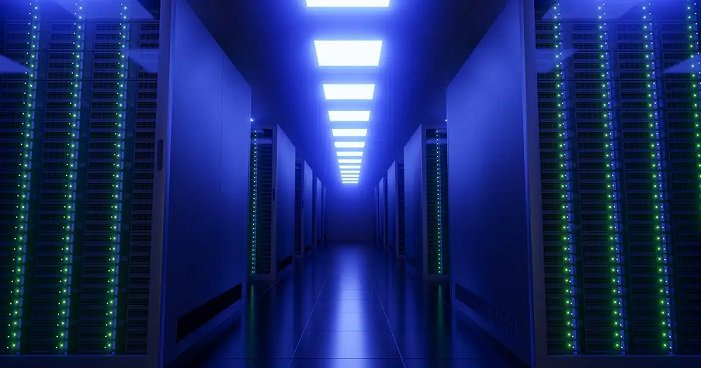
The History and Growth of Data Centers
The genesis of data centers as we know them today dates back to the large, mainframe computer rooms of the 20th century, which spearheaded the Information Age. With time, these evolved from basic storage facilities to complex, purpose-built buildings housing sophisticated infrastructure that power today’s internet and serve as the fortresses of corporate data. As enterprises and individuals began to rely heavily on digital technologies, the role of data center expanded, transitioning from local hardware storage to global data processing powerhouses. Alongside this evolution, the 1990s witnessed an explosion in data centers as the need for Internet Service Providers (ISPs) skyrocketed with the dot-com boom. This necessitated an unprecedented expansion in the size and capacity of data centers, laying the foundation for modern cloud computing infrastructures. Reflecting on these institutions’ historical significance highlights their growth and gives us a glimpse into the future trajectory of digital infrastructure.
Data Center Technologies: A Closer Look
Modern data centers represent a pinnacle of technological achievement, containing some of the most advanced equipment in the world. Sever racks densely packed with high-performance servers lie at the heart, surrounded by high-speed interconnect networks that facilitate rapid data transfer. Data is cradled in state-of-the-art storage solutions, from solid-state drives boasting blazing-fast access times to massive arrays of hard drives for long-term archiving. This hardware is coordinated and managed by sophisticated data center infrastructure management software (DCIM) that automates many tasks necessary to maintain efficiency and reliability. Furthermore, these environments are consistently being monitored and adjusted to optimize performance, including using machine learning algorithms that predict and prevent potential disruptions before they occur. Such tech-centric ecosystems allow for numerous operations, from cloud storage services and enterprise data management to hosting the complex webs of content delivery networks that speed up our online experiences.
Environmental Considerations and Green Initiatives
Amidst their technological prowess, data centers face significant environmental challenges, primarily due to their enormous energy consumption. This has prompted industry leaders to embark on greener paths, employing renewable energy sources such as solar and wind to power facilities. Large-scale efforts have been made to improve cooling efficiencies, as cooling systems represent a major portion of energy use in data centers. Techniques such as free-cooling—which leverages ambient air temperature—alongside innovative designs such as underwater or Nordic region data centers show the industry’s commitment to reducing its carbon footprint. Additionally, there is an increased emphasis on building energy-efficient data centers from the ground up, implementing modular designs that can scale as needed while minimizing waste. These green initiatives are not just an ethical stance for sustainability but are also becoming a competitive differentiator for businesses conscientious about their environmental impact.
The Security Landscape of Data Centers
In a digital economy where data is as valuable as currency, the security of data centers is an ongoing battle against evolving threats. Cybersecurity measures must be as agile as the attackers, adapting to the latest threats with state-of-the-art defense mechanisms. Physical security, encompassing everything from surveillance cameras to biometric access controls, ensures that only authorized personnel can access sensitive areas. Network security protocols, including firewalls and intrusion detection systems, provide a digital fortress protecting the data from unauthorized access or attacks. Furthermore, addressing insider threats and human error remains critical, so rigorous training and stringent policies are implemented to minimize risks. Organizations now recognize that data center security is multifaceted, requiring a concerted effort from physical, digital, and human angles to shield the treasure trove of data they contain.
The Future of Data Centers and Emerging Trends
As data centers evolve, several emerging trends are shaping their future. The adoption of quantum computing is poised to drastically enhance computing power and data processing capabilities, with implications for every industry from healthcare to finance. Artificial intelligence and machine learning are becoming regular fixtures in data centers, managing and optimizing resources and providing predictive analytics that can foresee and mitigate potential system failures. Moreover, there’s an escalation in the use of software-defined networking (SDN) and network functions virtualization (NFV) to increase flexibility and control and automate complex networking environments. Blockchain technology also enters the data center space with potential applications in securing transactions and improving supply chain transparency. These innovations signal an exciting future where data centers are not just storage facilities but are platforms for driving technological advancement and innovation.
Interconnectivity and the Rise of Edge Computing
The continued growth in data generation has prompted a paradigm shift in the architecture of data centers, with interconnectivity and edge computing emerging as pivotal concepts. Edge computing broadly refers to decentralizing data processing, bringing computation closer to data sources such as IoT devices and local-edge servers. This reduces latency and allows quicker, more efficient processing, crucial for applications like autonomous vehicles, smart cities, and real-time analytics. The trend also eases the pressure on central data centers and bandwidth by processing data at the network’s edge—a vital advancement in an increasingly connected and data-intensive world. As the fifth generation of mobile networks (5G) starts to roll out, the potential of edge computing seems boundless, enabling higher data transfer speeds and a plethora of new services and applications that can leverage this decentralized infrastructure.
Choosing a Data Center for Your Business
It is critical and multifaceted to select the right data center for a business’s IT needs. Factors such as geographical location play a significant role in influencing latency times and disaster recovery considerations. The reliability of a data center is often measured by its uptime statistics, typically presented in the industry-standard Tier Classification system. Businesses must also assess the scalability of data center offerings, ensuring that their services can grow with them as their data needs grow without costly and disruptive overhauls. Data sovereignty and privacy laws are other crucial considerations, as the data center’s location will determine which laws govern the stored information. Companies need to conduct thorough due diligence to ensure the data center they choose aligns with their specific requirements and compliance obligations.
Global Data Center Trends: A Regional Perspective
The global persona of data centers reflects a complex mosaic of trends influenced by regional characteristics. Asia, for instance, is seeing significant growth due to increasing internet penetration and technological adoption. At the same time, European countries grapple with stringent data protection regulations that dictate operational norms and security protocols. Amidst these regional disparities, finding common ground on global technology standards is critical for multinationals. The impact of navigating different regulations across borders is significant, as highlighted by discussions in international forums and think tanks focused on cyber risk and data center security. Harmonizing these standards while respecting local legislation is a delicate balance that continues to impact how data centers are constructed, managed, and secured globally.
Data Center Staffing and Training Challenges
The fast pace of technological development in data centers instigates ongoing challenges in staffing and adequately training IT personnel. The skills required to manage today’s complex data environments include technical expertise and proficiency in cybersecurity, compliance, and disaster recovery planning. Firms are investing in continuous training programs and partnerships with educational institutions to ensure their workforce stays ahead of the curve. Automation, while streamlining some processes, also requires a re-skilling of the workforce to handle more strategic tasks that cannot be automated. The industry’s health depends on nurturing a talent pool that is agile, knowledgeable, and prepared for the unceasing evolution of data center technologies.
Best Practices for Data Center Maintenance and Operations
Erring on the side of caution is the mantra for data center operators regarding maintenance and operations. A meticulous approach to managing these crucial facilities involves:
- Establishing and adhering to regular maintenance schedules.
- Proactive monitoring.
- Implementing a robust disaster recovery plan.
Tools that aid in real-time tracking and analyzing system performance are instrumental in preventing potential issues before they escalate into costly outages. Data centers can deliver the reliability businesses depend upon to thrive in the digital realm by applying a diligent operational perspective and leveraging the latest technologies for efficiency.



